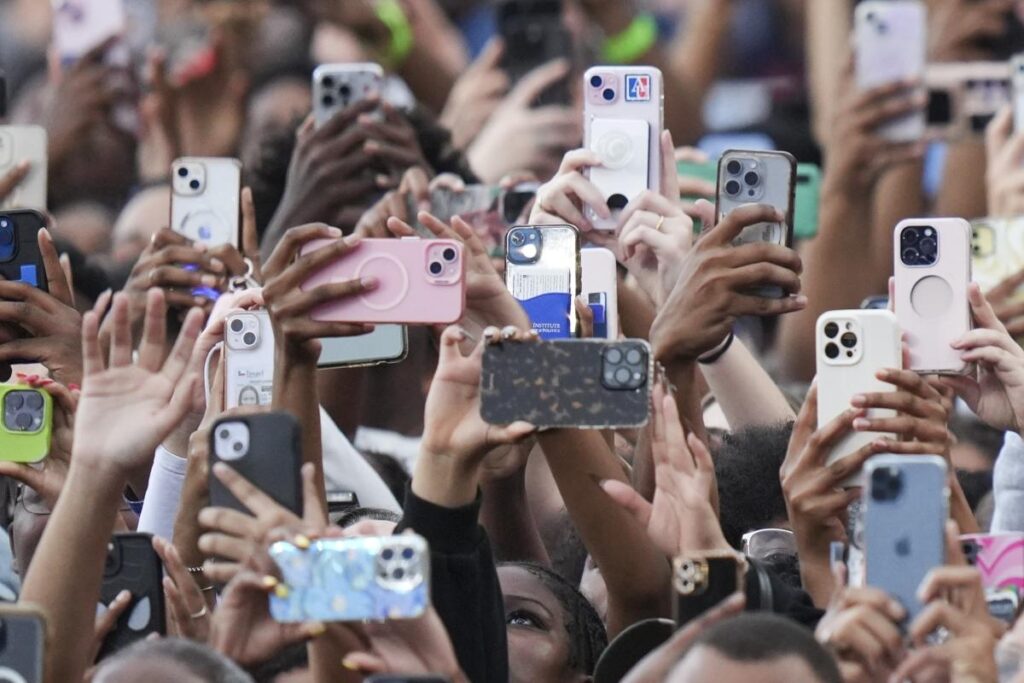According to a recent Pew Research Center report, approximately one in five Americans, largely reflecting a similar ratio among Republicans and Democrats, consistently obtain their news from digital influencers on social media platforms, particularly X (formerly Twitter). The report’s findings stem from a thorough survey of over 10,000 U.S. adults and an analysis of influencer engagements during significant periods, such as the recent presidential campaign. The influencers examined are individuals who routinely discuss current affairs and possess substantial follower counts (over 100,000) across major social media platforms like Facebook, Instagram, YouTube, X, and TikTok. The report features a diverse array of influencers, spanning the political spectrum, from progressive figures like Brian Tyler Cohen to conservative counterparts like Ben Shapiro, along with non-partisan content creators such as Chris Cillizza, a former CNN analyst.
The body of content shared by news influencers predominantly revolves around political subjects, particularly the election, alongside social issues, including race and women’s rights, and international events, such as the Israel-Hamas conflict. A notable demographic observation within this influencer sphere reveals that 63% of these figures are men, while 77% lack formal affiliations with traditional media organizations. Moreover, the research highlighted that around half of the sampled influencers appeared politically neutral, although slightly more identified as conservative compared to liberally inclined counterparts. The presence of these influencers has been keenly recognized during campaign seasons, with both political parties vying for their attention and endorsement to attract voters increasingly reliant on these non-traditional news sources.
During the recent campaign cycle, both the Republican and Democratic parties strategically engaged influencers, including those with less political inclination, to tap into the younger electorates. Credentialed influencers were present at national conventions, where content creators like Vice President Kamala Harris collaborated with the host of “Call Her Daddy,” while former President Donald Trump made appearances on podcasts that appealed to young male demographics. This trend underscores the growing relevance of social media influencers in shaping public opinion and mobilizing voter engagement, with Pew’s senior social scientist Galen Stocking emphasizing the importance of analyzing who is behind these prominent accounts that resonate beyond traditional media outlets.
Despite a substantial 85% of influencers maintaining a presence on X, many also actively engage audiences on other platforms, which includes Facebook, Instagram, YouTube, and TikTok. The report also finds that demographic factors such as race, age, and income play significant roles in determining who consumes news via these influencers, with younger adults, racial minorities, and individuals from lower-income households being more likely to rely on influencer-driven content for news. Furthermore, a majority of respondents indicated that their understanding of current events improved through these influencers, although a quarter expressed that it did not significantly alter their views, and a small percentage reported feeling more confused as a result of the content they received.
While the engagement of influencers in the news landscape raises concerns about misinformation—especially considering that many do not adhere to established editorial practices—it also highlights their potential to provide alternative viewpoints that might be overlooked by traditional media. The Pew report found that 70% of surveyed individuals perceive the news from influencers as different from mainstream narratives, with a quarter labeling it as “extremely or very different.” This distinction underlines the diverse range of insights offered by these influencers and indicates a perceived value in being exposed to contrasting perspectives.
Interestingly, the research shows that TikTok is unique among major social platforms in that influencers identifying with conservative ideologies are not in the majority. Instead, influencers on TikTok are more likely to support LGBTQ+ rights or identify with the LGBTQ+ community, suggesting a more progressive lean within this demographic. Additionally, TikTok is notable for exhibiting the smallest gender disparity among its news influencers, highlighting an interesting divergence in audience dynamics and content creation across different social media platforms. This nuanced understanding of the influencer landscape paints a complex picture of how news consumption is evolving in a digital age, ultimately reflecting changes in societal norms, political affiliations, and audience engagement strategies.
In summary, the rise of digital influencers as news sources demonstrates a significant shift in how Americans are accessing information, particularly in a politically charged environment. As traditional news organizations increasingly compete for attention in a fragmented digital landscape, the strategy of collaborating with influencers has become an essential part of political outreach. The implications of this trend suggest a crucial need for ongoing research into the credibility, impact, and role of influencers in the broader media ecosystem, especially as Americans navigate a complex array of news narratives in an age dominated by social media.

